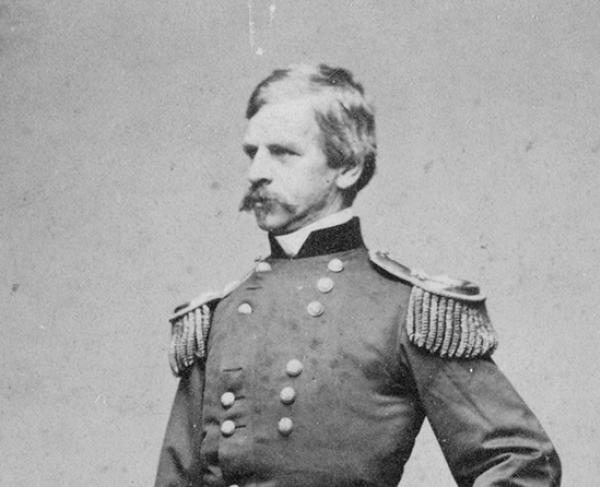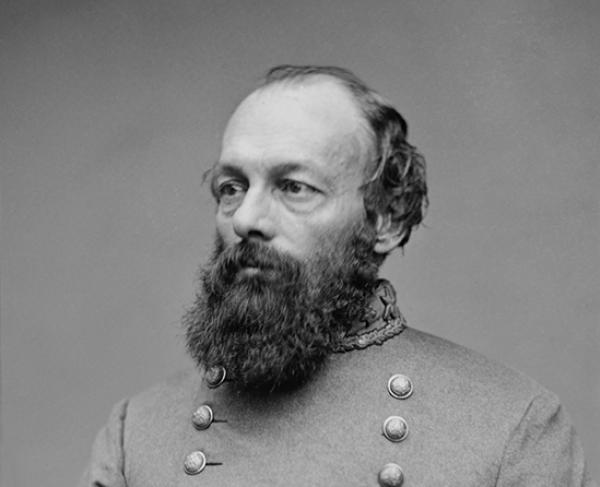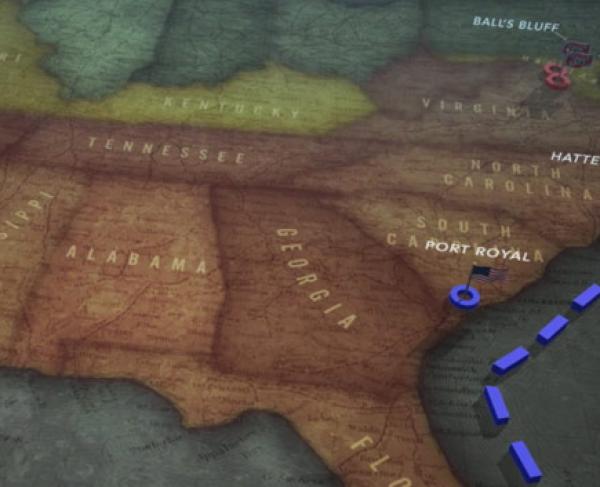
Fort DeRussy
Avoyelles Parish, LA | Mar 14, 1864
The Battle of Fort DeRussy was the first battle of the Red River Campaign, which lasted from March 10 to May 22, 1864.
How It Ended
Union Victory. The previously believed impregnatable Fort DeRussy fell to Union forces under Brig. Gen. A. J. Smith. This defeat opened up the Red River from New Orleans to Alexandria and led the Union one step closer to their target: Shreveport, the capital city of Confederate Louisiana.
In Context
The Red River campaign aimed to capture Shreveport, the capital of Confederate Louisiana, under the command of Confederate Gen. E. Kirby Smith. It was not only the headquarters for the Army of the Trans-Mississippi but also a potential gateway for a Union invasion of Confederate Texas.
Lead by Maj. Gen Nathanial P. Banks, the plan for the campaign was to bring 20,000 troops across southern Louisiana from bases in and near New Orleans to Alexandria. Rear Admiral David Dixon Porter and his fleet would enter the Red River, eliminate any Rebel forces or fortifications in its lower reaches and join Banks at Alexandria. From there, the two forces would approach Shreveport using the river roads. After the two southern forces were underway, Steele and 10,000 men, mostly cavalry, would leave Little Rock, Arkansas, cut across Rebel-held territory, and head toward Shreveport from the northeast.
However, there were two problems with the initial plan: there was no overall commanding officer for the campaign, and the plan was quite complex. In addition, Banks had alternate political and financial ambitions for this campaign. First, he hoped that a successful military campaign could give him national recognition and help him secure the Republican nomination for the 1864 presidential election. Second, the Red River was also home to numerous cotton plantations. Banks hoped to use the military advances to bring Northern cotton buyers into the region to help him procure cotton and financial capital.
Rear Admiral David D. Porter’s fleet and Brig. Gen. A.J. Smith’s Sixteenth and Seventeenth Corps from the Army of the Tennessee set out on March 12, 1864, up the Red River from New Orleans, the most direct route to Shreveport. The major impediment to the Union expedition along the Red River was the formidable Fort DeRussy, an earthen fortification with a partly iron-plated battery. Confederate forces built the fort in 1862 to defend the lower Red River and designed to resist Union ironclads' fire.
Union Brig. Gen. A.J. Smith’s infantry set out on the morning of the 13th to determine if any enemy was in their path. This force dispersed an enemy brigade, after which Smith set his men in motion up the Fort DeRussy Road. Early the next morning, the 14th, they continued the march. Upon arriving at the fort, the enemy garrison of 350 men opened fire. Smith decided to use Brig. Gen. Joseph A. Mower’s division to take the fort and set about positioning it for the attack. Around 6:30 pm, Smith ordered a charge on the fort, and about twenty minutes later, Mower’s men scaled the parapet, forcing the garrison to surrender. Fort DeRussy, which some had said was impregnable, had fallen, and the Red River up to Alexandria was open.
48
269
Porter successfully reached Alexandria after the victory at the Battle of Fort DeRussy. However, the next stage of the campaign was delayed until Banks, and his troops reached Alexandria a week and a half later. Because of the delay in Alexandria, little reconnaissance was conducted to find the best road for the soldiers to use northward. Following a local farmer’s advice, Banks found himself and his troops along a narrow roadway far away from the Red River. Along this narrow roadway, the Battle of Mansfield on April 8th and the Battle of Pleasant Hills on April 9th were fought. After these two battles, the Union army was demoralized by the high cost of casualties and retreated toward Alexandria.
Meanwhile, Porter had reached the rendezvous point of Springfield along the Red River and, not willing to wait for Banks, continued moving Northward. However, shallow riverways forced Porter to retreat to Alexandria. In Arkansas, Steele had barely left Little Rock before his troops were engaged with Confederate forces at the Battle of Jenkin’s Ferry. Because of this battle, his forces retreated to the protected Little Rock fortifications and never reached Louisiana.
The Red River Campaign is seen as a failure and a waste of resources. None of the Union forces deployed reached Shreveport and Louisiana remained in the hands of the Confederacy for the rest of the war.
The Red River Campaign ultimately failed because of a lack of communication between Banks, Porter, and Steele. With such an elaborate campaign, an overall leading commander could have kept track of where each of the three separate forces was, ensured that proper reinforcements were available, and encouraged simultaneous attacks during critical battles. A strong overall commander could have also superseded the generals’ strong-willed personalities to ensure that none of them were operating only with their best interests in mind.
If the Red River Campaign were successful, then Louisiana would have been occupied by Union forces. This occupation would allow Northern forces to utilize the crops, such as cotton, in the region to support Northern industry and the Union cause. Occupying Shreveport could have robbed the Army of the Trans-Mississippi of a headquarters and significantly weakened that army. With weakened Confederate force and control of the Red River, Union forces could have started making headway into eastern Texas. While the Union blockade attempted to stop importation and exportation out of Texas since the beginning of the war, cotton had continued to leave Texas ports, and much-needed supplies had been allowed to enter. If Union forces made headway into Eastern Texas, this trade could have been slowed or completely stopped and could have weakened Confederate forces. Weakened Confederate forces in the Western theater coupled with the weakened forces in the Eastern Theater after the Battle of Gettysburg and the Siege of Vicksburg in 1863, could have brought the war to a close slightly faster.
Fort DeRussy: Featured Resources
All battles of the Red River Campaign
Related Battles
10,000
300
48
269









